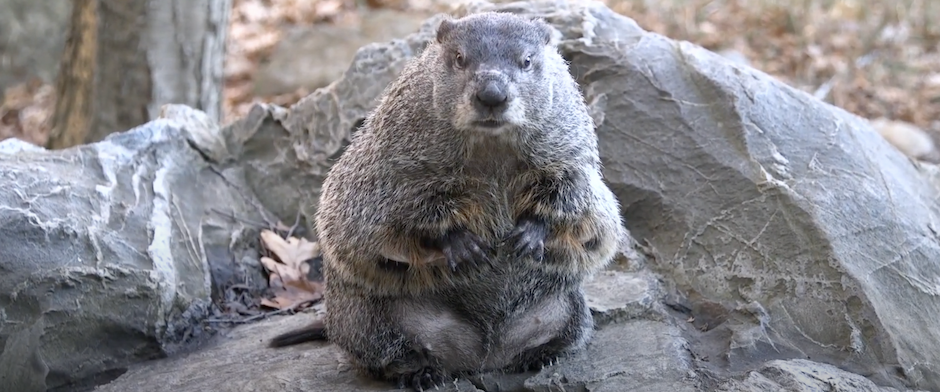Groundhogs 101: Appearance, Biology, Life Cycle, Habitat, Diet, Behavior
Groundhogs are special little rodents that pose a nuisance and a potential threat to those who encounter them. While they may not look entirely aggressive, looks can be deceiving. Groundhogs are a type of rodent called a marmot.
They have short legs, long fur and very sharp claws. Their sharp, curved claws are adapted for digging and capable of producing plenty of damage. A groundhog’s body ranges from four and a half to almost nine pounds in weight and is covered in thick brown or gray fur. This animal also has a curved spine creating the perfect posture for digging and hunting.
Groundhogs live in burrows dug deep into the ground. A complete groundhog burrow can span forty-five feet in width under the ground. 
Life Cycle
The groundhog’s mating season typically occurs in April and May. Females birth anywhere from two to six young annually. The young are born without fur and with closed eyes. It takes about four weeks for the young to open their eyes and begin to resemble a groundhog. Groundhogs are special in the sense that older females have a better chance of reproducing than younger females.
After the young are born, groundhogs hibernate for the winter. They cozy up in their burrows with their young to ride out the cold winter months safe from predators. Without the intervention of predators, groundhogs can live between nine and fourteen years.
Diet and Predators
Groundhogs are primarily herbivores, meaning they thrive on plant life. They will also feed on produce, insects and even garden produce. Groundhogs can wreak havoc on a garden making it a costly pest for farmers to try to contain. These animals have long, powerful incisors and often sit erect to consume their meal much like a squirrel does.
These tasty little creatures have plenty of natural predators in the wild. Cougars, foxes, bears, wolves and eagles are just some of the animals that hunt groundhogs depending on geographical location. Luckily for these little marmots, they are great swimmers and they can climb with tenacity.
Socialization
Groundhogs typically inhabit lower lying areas. They prefer regions where the ground i8s soft enough for them to dig and build their burrow. Groundhogs aren’t social creatures at all. They like to keep to themselves.
Groundhogs will fight to assert their dominance over a particular region. While they aren’t social animals, they do engage in some social behaviors. For example, some groundhogs hang around outside their burrow to keep watch. If a predator is spotted, they whistle loudly to alert other groundhogs in the area.
Visit our Wildlife Trapper Middletown home page to learn more about us.

